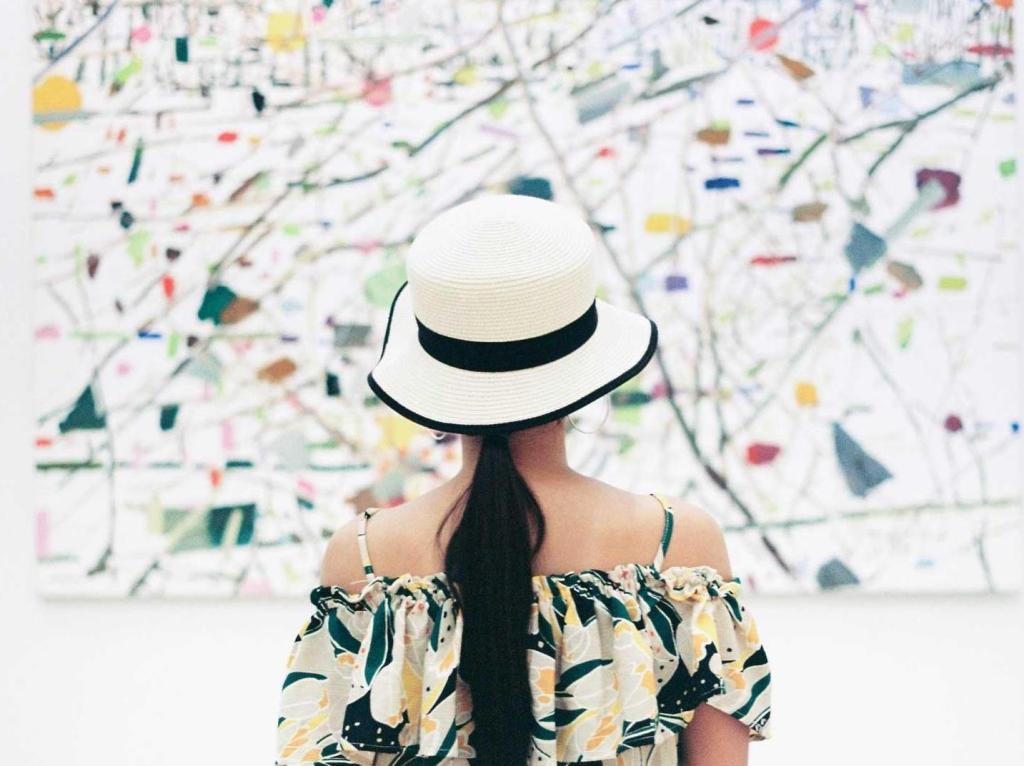On Friday 18 May, the world celebrates International Museum Day – an opportunity to reflect on the significant role museums all over the world play as guardians of our cultural heritage.
Coordinated by the International Council of Museums since 1977, the event raises awareness of the integral role museums play in documenting our history and providing learning opportunities for future generations. For 2018, the theme chosen to bring all the different museum activities and events together is Hyperconnected museums: New approaches, new publics.
To encourage this connection and understanding of Australia’s own cultural institutions for International Museum Day, here’s a guide to some of the nation’s most significant museums and what they are celebrating this month.
Museum of Contemporary Art Australia
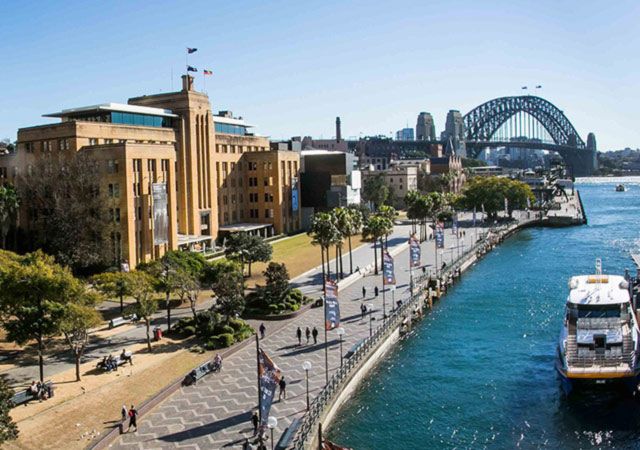
Image: Anna Kucera
To mark International Museum Day on 18 May, the Museum of Contemporary Art Australia (MCA) invite you to enter The Garden (here small gestures make complex structures), 2012, a multi-sensory work by Emily Floyd in the MCA Collection. Normally displayed as a work to be viewed, the MCA are opening up the space so that visitors can touch and play with a multitude of polished wooden spheres, cylinders and cones. Move and arrange your own composition as you explore space, geometry, and how to create and resolve shared ideas and structures.
The Garden was commissioned in 2011 by the MCA for the Jackson Bella Room, a dedicated and interactive space for people with access needs or disabilities.
The Garden is a multi-sensory environment in which children are encouraged to touch, explore and play with a multitude of polished wooden spheres, cylinders and cones. Presiding over this collection of handcrafted toys are two abstracted, stooping figures, made of unvarnished timber. They are based on the figures in Jean-Francois Millet’s painting, The Gleaners (1857), a sympathetic reading of peasant life which depicts women gleaning a field after harvest. The gleaners were considered the poorest of the working class and farmed common land. In The Garden, their benign presence as women and labourers forms the background to child’s play, which is also important but marginalised work.
All ages welcome. Free, drop in.
Museum and Art Gallery of the Northern Territory
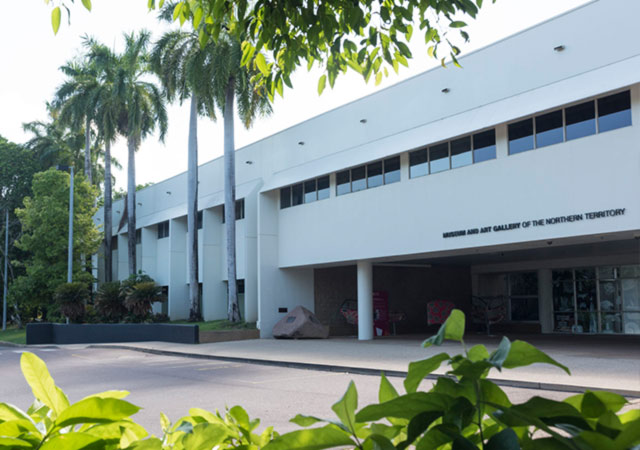
Spread across six sites, the Museum and Art Gallery of the Northern Territory (MAGNT) is home to internationally renowned cultural and scientific collections, research facilities, and exhibition programs.
As both a museum and a gallery MAGNT is known for collections and expertise in: Aboriginal art, culture and stories; Marine, earth and terrestrial sciences; Northern and Central Australian history; Australian Art; and Asian and Oceanic art and material culture.
Regionally-specific collections at MAGNT’s principal Darwin facility – situated on Larrakia Land at Bullocky Point – trace the Northern Territory’s natural, cultural and maritime history. MAGNT Bullocky Point also presents both temporary and travelling exhibitions, and is home to the annual Telstra National Aboriginal & Torres Strait Islander Art Awards (NATSIAA), a showcase for both established and emerging Aboriginal and Torres Strait Islander artists from across Australia. Megafauna Central,
MAGNT’s newest location opening in July 2018, Megafauna Central in Alice Springs CBD, showcases the story of 8 million year old Central Australian megafauna. Located approximately 200km north east of Alice Springs, the Alcoota Scientific Reserve is home to fossil beds housing over 3,000 individual animals from the Miocene epoch. Megafauna on display includes the world’s largest flightless bird and a giant crocodile.
TarraWarra Museum of Art
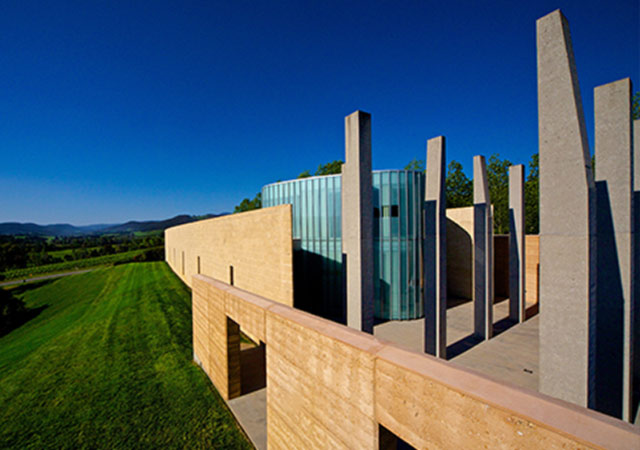
Image: Redfish Bluefish Photography
Situated in the Yarra Valley, on the cusp of outer Melbourne and regional Victoria, TarraWarra Museum of Art brings together the appreciation of both art and place. The Museum is uniquely positioned to deliver the history of Australian modernism and new developments in contemporary art through a collection donated by patrons Eva Besen AO and Marc Besen AC.
Exhibitions such as Edwin Tanner: Mathematical Expressionist (showing until 15 July) look at the triumphs of Australian modernism through a contemporary art filter, and involve the commissioning of new work by contemporary artists.
Edwin Tanner (1920-1980) was a polymath whose wide-ranging talents saw him excel as a professional engineer, aircraft pilot, champion cyclist, marksman, poet, and philosopher. These experiences provided the artist with a rich and idiosyncratic store of images from which to draw: from shipyards and power plants to office interiors and musical notation.
The exhibition is programmed together with specially commissioned new works by the artist James Hullick. THE ARBOUR OF DOORS is an enclosed speaker cave made of recycled audiovisual materials that visitors can enter, and THE ORRERY OF HUMAN DESIRES is a mechanical model of rotating speakers and analogue synthesisers that articulate orbits of human desire. The two works have been conceived of as ‘instruments’ for expanding audiovisual practice and respond directly to Tanner’s work.
ACMI
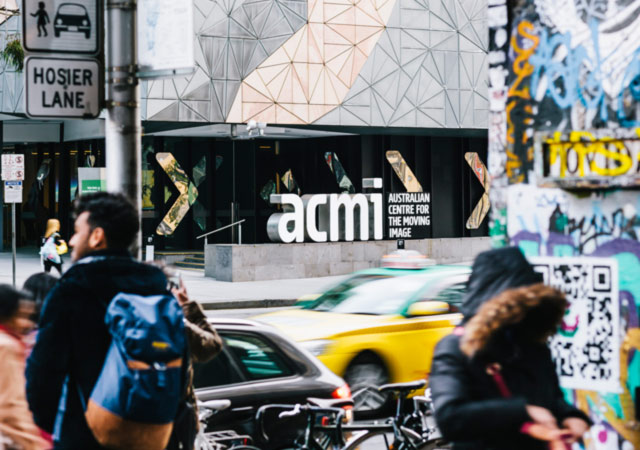
Image: Renee Stamatis
Situated in the heart of Melbourne, the Australian Centre for the Moving Image (ACMI) is the world’s most visited moving image museum or film cultural centre, welcoming over 1.45 million visitors last year.
Through a vibrant calendar of ticketed and free exhibitions, film screenings, installations and commissions, workshops, festivals, and public and education programs, ACMI celebrates, supports and explores the past, present and future of the moving image, and it’s also the first Australian museum to house a co-working space dedicated to the creative industries, ACMI X.
Last month, ACMI received $36.6m in funding, which will transform the Centre into the world’s leading museum for screen culture, education and innovation. But it’s not just about the future: right now at ACMI you can fall down the rabbit hole into Wonderland, an immersive, world premiere exhibition celebrating Lewis Carroll’s timeless heroine, or hitch a ride into the dark heart of Australia in Soda_Jerk’s TERROR NULLIUS.
If cinema is more you’re thing, ACMI is also screening films celebrating Russian auteur Andrei Tarkovsky and have a retrospective selected by David Stratton on Finland’s greatest director, Aki Kaurismaki, coming soon.
Given all this, it’s safe to say that we’re excited about what a reimagined ACMI could look like in 2019.
Australian Museum
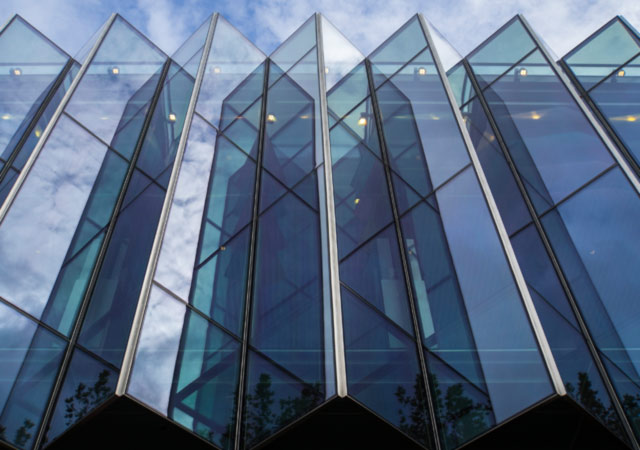
Image: Nick Langley
With all our differences, there’s something comforting about the fact that some six generations of Sydneysiders remember a visit to the Australian Museum. It’s often the Long Gallery that sticks in people’s minds, opened in 1854 as the first purpose-built museum exhibition space in Australia.
In the 1920s, school kids in the Long Gallery gawked at an ancient giant sloth skeleton. (In 1982, The Clash posed nonchalantly in front of the specimen at a press conference held at the museum. Legend has it Joe Strummer declared, “Rock and roll is nothing but a bunch of old men,” before spitting on the floor and mopping up the goop with his cravat.) And kids of the 80s and 90s might recall the Long Gallery as the Skeleton Gallery, inhabited by the bones of a man snoozing in a rocking chair, his loyal pet dog (also a skeleton) at his side.
Much has changed in the Australian Museum’s 190 years. Conservation works in the Long Gallery have restored the grandeur of the space. The Westpac Long Gallery is now home of 200 Treasures of the Australian Museum, an exhibition displaying 100 of the museum’s most precious objects and specimens, and 100 stories of pioneering Australians.
As a deep-dive into the exhibition, this August the museum is holding a six-part Lunchtime Lecture Series, featuring talks by George Miller, Thomas Keneally, Google Maps co-inventor Noel Gordon and Layne Beachley.
The Westpac Long Gallery has never seen an event like the one happening tonight (Friday 18 May) – a listening party of French electronic duo AIR’s album Music For Museum.
Equally shocking to Victorian-era visitors would be Murder at the Museum – a hugely popular event that challenges participants to hunt for clues, seek out the murderer and foil their plans. It returns later this year.
Museum of Brisbane
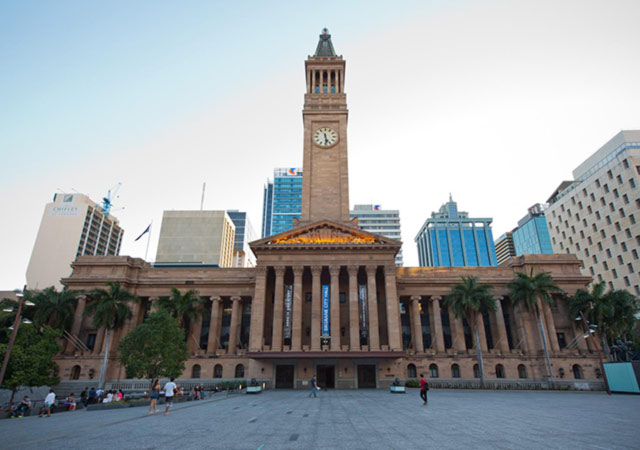
Image: Atmosphere Photography
The Easton Pearson Archive at Museum of Brisbane is the largest textile collection from a single Australian fashion house held by a museum. The Archive features the complete collection of internationally-acclaimed fashion house Easton Pearson — first launched by Pamela Easton and Lydia Pearson in 1988 — and comprises more than 3,300 signature garments, as well as accessories, original sketches, look books, ephemera and runway footage.
The storytellers of Australian fashion, Easton Pearson’s unique approach referenced art, travel, film, literature, music and emotions to create a bold aesthetic characterised by daring patterns, innovative materials, meticulous techniques and a sustainable ethos. The label’s eclectic, boldly patterned and embellished fashions graced catwalks and showrooms across Europe, the Middle East, Asia, America and Australia up until its closure in 2016.
The Archive reveals the artistry and innovation of the designers, who were the 2009 Australian Fashion Laureates, while also highlighting the evolution of the national fashion industry and capturing a pivotal piece of Australian and Brisbane design and fashion history.
On 22 November 2018, the Museum opens its first major exhibition showcasing the Archive. The Designers’ Guide: Easton Pearson Archive features 200 garments personally selected by Pamela and Lydia to reveal the artistry, techniques and demi-couture practices that placed the label at the forefront of Australian fashion for 27 years. The Easton Pearson Archive was gifted to Museum in 2017 by Brisbane philanthropist and contemporary art patron Dr Paul Eliadis.
To learn more about museums and exhibition programs across Australia visit our member profiles.
